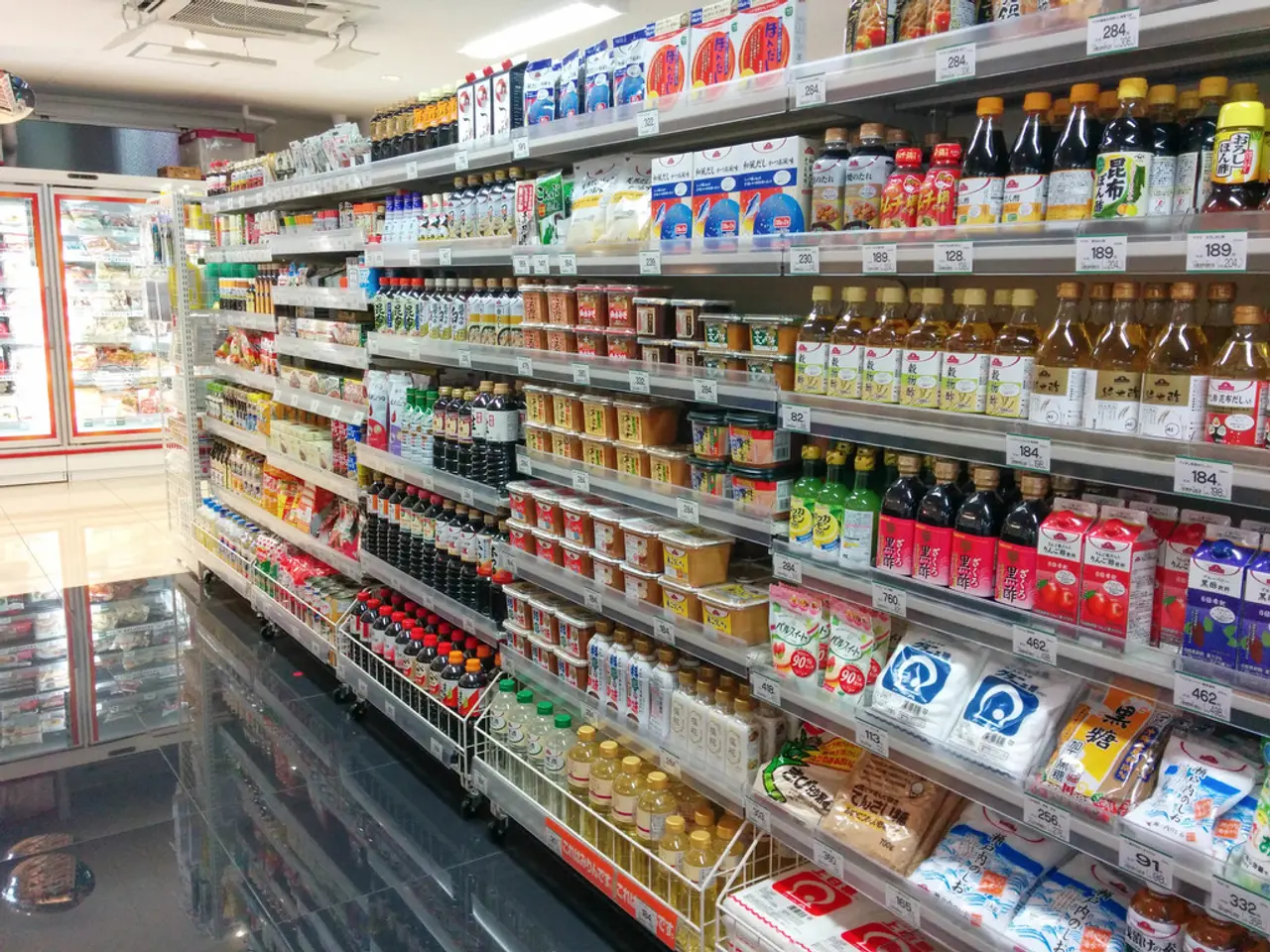Imposed Tariffs Impose Annual Tax of $200 Billion on Small Businesses
In a recent report, the U.S. Chamber of Commerce revealed that American small business importers (those with fewer than 500 employees) collectively imported over $868 billion worth of goods in 2023. If import levels remain constant, these businesses would face an annualized tariff tax of approximately $202 billion, according to the Chamber's estimates [1].
The tariff rates by country of origin vary significantly. For instance, Brazil's exports to the US are subject to a 40% tariff, accompanied by a 10% reciprocal tariff [1]. India is expected to face an additional 25% tariff on imports starting mid-September 2025, potentially bringing the total tariff to around 50% [2][4].
In the case of European steel imports, a 50% tariff is levied on the steel value share [1]. On the other hand, autos and auto parts from Canada and Mexico are subject to a 25% tariff [1]. Imports from Japan, South Korea, Cambodia, and Indonesia could result in a combined tariff increase of $27 billion for approximately 70,000 American small businesses [3].
The tariff breakdown is intricate due to the range of rates (from 10% to 50%) and product-specific applications. The Chamber's analysis utilised Census Bureau import data for small business importers and applied the new tariff rates announced on July 31, 2025, to reach the estimated $202 billion annual tariff tax total [1].
However, it's important to note that these estimates may not capture every nuance. For example, certain goods, such as semiconductors, may be excluded from tariffs, potentially leading to an underestimation of the tariff impact [1]. Conversely, the estimates may overstate the tariff for goods that are currently not subject to tariffs.
The Chamber's report provides a comprehensive breakdown of the tariff rates and estimated annualized tariff taxes for small business importers by country as of August 2025. The breakdown includes:
- Brazil: 40% + 10% reciprocal tariff
- India: Additional 25% tariff starting mid-September 2025, potentially bringing total to about 50%
- Europe (steel): 50% tariff on steel value share
- Canada and Mexico (autos and parts): 25% tariff
- Japan, South Korea, Cambodia, Indonesia: contributing to a $27 billion annual tariff impact among 70,000 small businesses
- Overall small business importers: $202 billion estimated annual tariff tax based on $868 billion import value and current tariff rates [1][2][3][4].
As these new tariff rates take effect, small businesses may face increased costs, potentially leading to higher prices for consumers [5]. Updated tariff rates for August 2025 have been announced, and if American small businesses maintain the same level of imports at these new tariff rates, they will face an estimated $202 billion annual tariff tax.
- The U.S. Chamber of Commerce's analysis suggests that American small business importers could face an annualized tariff tax of approximately $202 billion, if import levels remain constant.
- The Chamber's report reveals that there is a wide range of tariff rates for different countries, for instance, Brazil has a 40% tariff and a 10% reciprocal tariff, while Indian imports starting mid-September 2025 are expected to face a 25% additional tariff.
- According to the Chamber's report, the estimated tariff for imports from Japan, South Korea, Cambodia, and Indonesia could result in a combined tariff increase of $27 billion for around 70,000 American small businesses.
- The Chamber's report also indicates that the imposition of these new tariff rates could lead to increased costs for small businesses, potentially resulting in higher prices for consumers.




